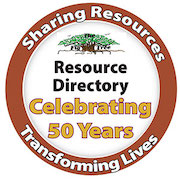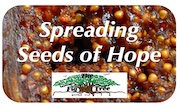Cathedral presents art exhibition to stir interfaith understanding, respect
The power of art to communicate is key to “The Bridge” exhibit that will be on display during June at the Cathedral of St. John at 127 E. 12th Ave. in Spokane.
 |
| Bill Ellis believes art can humanize and dehumanize people. |
The Very Rev. Bill Ellis, dean of the cathedral, said that throughout history famous artists have created works that both subtly and not so subtly politicize, sometimes intentionally to humanize or dehumanize individuals and groups.
“The Bridge” exhibits art works of 47 internationally recognized and emerging artists who come from 15 countries—men and women of Muslim, Christian and Jewish backgrounds.
Their diverse voices speak to the challenges and hopes of attempting to cross “what bridges us to each other.” They also uplift “what people hold in common across their creeds and cultures.”
“The Bridge” opened in Paris in February 2015 during the United Nation’s World Interfaith Harmony Week, just after the shooting at the office of Charlie Hebdo, a French satirical weekly magazine. That event is part of the increasing chasm and discord among faiths and ethnicities in the Middle East and the West.
Paul-Gordon Chandler, art curator, author, interfaith advocate, social entrepreneur and art patron is bringing the 2015-16 traveling exhibition. It is the seventh exhibit of CARAVAN, a peace-building-through-arts nonprofit that seeks to build bridges for interfaith understanding and reconciliation.
Paul-Gordon, an Episcopal priest with standing in the Diocese of Spokane, is the founder and president of CARAVAN.
He has ties to the cathedral in Spokane where he has preached and “sojourned” over the years, said Kay Rafferty, chair of the cathedral’s exhibition organizing committee.
The exhibit, Kay said, is designed to trigger questions about “where we go from here.”
Believing that art can build respect, understanding, sharing, friendship and harmony, Paul-Gordon has developed “nomadic” art exhibitions shown worldwide rather than in a fixed location. They are often in sacred spaces, rather than galleries or museums, so “the contemplative nature of those spaces” can further the exhibition’s message.
After living his first 18 years in the French-speaking, Muslim-majority, West African country of Senegal, Paul-Gordon majored in theology at Wheaton College and at Chichester Theological Seminary, a Church of England institution in England.
He has worked in the Islamic world in faith-based publishing, relief and development agencies and churches.
From 2003 to 2013, Paul-Gordon was rector of an international English-speaking Episcopal/Anglican church in southern Cairo, Egypt, serving 30 nationalities from many denominations and faiths. Part of the exhibit’s proceeds will go to Educate Me, a program to educate underprivileged children in Cairo.
Bill, who has been at the cathedral in Spokane for 10 years, said the exhibit is important for the Cathedral of St. John to host.
During his summer 2014 sabbatical, Bill spent three weeks “doing art” at the Grunewald Guild in Leavenworth learning to draw, painting watercolor pieces and weaving.
“I took my sabbatical in art because I have spent most of my life in other realms,” he said.
Bill also spent three weeks in London visiting secular and religious art galleries.
“I discovered that art is an important medium that can tell the truth and tell lies. I saw World War II propaganda art and Picasso’s Guernica, showing what bombing from the art does to people. It depicts the horror, pain and death that happen to real human beings,” Bill said.
He also pointed to the power of the Pulitzer Prize winning photo of a Vietnamese girl, Trang Bang, running down a street screaming after being burned by napalm.
“It made people realize that war kills human beings. That little girl is your girl. That picture showed that the Vietnam War was killing people. War, discrimination and hatred kill and damage little girls. The photo washed away the patriotic propaganda with realization that our bombs and napalm were killing people,” he said.
World War II propaganda of Germany, Japan, the Soviet Union and the United States dehumanized the foes, likening them to animals, rapists, pillagers and subhuman beings, Bill said.
“Art has a responsibility, a moral obligation, to tell the truth about our common humanity across every race, creed and time,” he said. “It is one of the most effective mediums for humanizing people. It can force us to face the implications of what we do when we dehumanize others.
“The Bridge tells the truth of three great religions—Christianity, Islam and Judaism—humanizing people and making people aware of their common humanity,” Bill said.
Speaking on behalf of the organizing committee, Kay pointed out that the exhibit “lifts a veil and offers hope, as it opens discussions about religious backgrounds, histories and communities coming together as faith-based people.”
The cathedral, she said, has been opening its doors to partnerships and conversations with people of different faiths, especially with the involvement of Skyler Oberst, a cathedral member and president of the Interfaith Council.
“We had speakers in Lent focus on the Middle East. Our congregation is interested in knowing what is going on in the Middle East,” Kay said. “We need to be an agent for good relationships among faith groups in Spokane.
“Art has a way of inspiring our minds and hearts in ways that no amount of talking can do,” she said.
Kay expects exhibit visitors to come in and be filled with questions and thoughts on what is possible to bridge between faiths.
“It should set us up for more groundwork,” she said.
Kay hopes the exhibit will inspire people of many faiths in the region to come together, as they have been doing through Spokane Interfaith Council’s Meet Your Neighbor events.
“We hope that people leave the exhibit asking, ‘What can I do now?’ and curious to learn more and be more thoughtful. In this election cycle, there have been many superficial remarks.
“Are we smart enough as we progress in the 21st century, or will we let our understanding be flattened by combative comments?” said Kay.
“Art softens the edges to help us engage in conversations to deepen our perspectives so we can move toward reconciliation,” Kay said.
The exhibit will be hung on June 2 and open for First Friday Art Walk on June 3.
Starting June 6, the hours are noon to 5 p.m., Tuesdays, Thursdays, Fridays and Sundays, and noon to 8 p.m., Wednesdays and Saturdays.
For information, call 838-4277, email k.raff@comcast.net, bellis@stjohns-cathedral.org, or oncaravan@gmail.com or visit stjohns-cathedral.org/bridge-0.
Copyright © June 2016 - The Fig Tree






